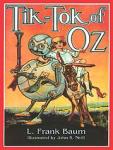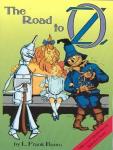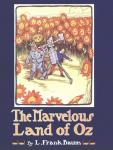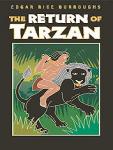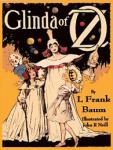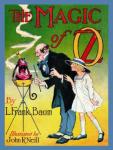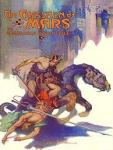The Frozen Deep
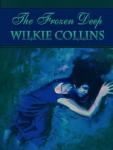
The Frozen Deep was a play, originally staged as an amateur theatrical, written by Wilkie Collins along with the substantial guidance of Charles Dickens in 1856. Dickens's hand was so prominent – beside acting in the play for several performances, he added a preface, altered lines, and attended to most of the props and sets – that the principal edition of the play is entitled "Under the Management of Charles Dickens". John C. Eckel wrote: "As usual with a play which passed into rehearsal under Dickens' auspices it came out improved. This was the case with The Frozen Deep. The changes were so numerous that the drama almost may be ascribed to Dickens". Dickens himself took the part of Richard Wardour and was stage-manager during its modest original staging in Dickens' home Tavistock House. The play, however, grew in influence through a series of outside performances, including one before Queen Victoria at the Royal Gallery of Illustration, and a three-performance run at the Manchester Free Trade Hall for the benefit of the Douglas Jerrold Fund to benefit the widow of Dickens's old friend Douglas Jerrold. There, night after night, everyone – including, by some accounts, the carpenters and the stage-hands – was moved to tears by the play. It also brought Dickens together with Ellen Ternan, an actress he hired to play one of the parts, and for whom he would leave his wife Catherine. The play remained unpublished until a private printing appeared sometime in 1866.
Related Books
Author other works
-
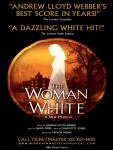
The Woman in White
Wilkie Collins
The Woman in White is an epistolary novel written by Wilkie Collins in 1859, serialized in 1859–1860, and first published in book form in 1860. It is considered to be among the first mystery novels and is widely regarded as one of the first (and finest) in the genre of 'sensation novels'.The story is considered an early example of detective fiction with the hero, Walter Hartright, employing many of the sleuthing techniques of later private detectives. The use of multiple narratives draws on Collins's legal training, and as he points out in his Preamble: 'the story here presented will be told by more than one pen, as the story of an offence against the laws is told in Court by more than one witness'. In 2003, Robert McCrum writing for The Observer listed The Woman in White number 23 in "the top 100 greatest novels of all time", and the novel was listed at number 77 on the BBC's survey The Big Read.Walter Hartright, a young art teacher, is walking from Hampstead to London late one summer's evening, when he meets a mysterious woman dressed in white, apparently in deep distress. He helps her on her way to London, but later learns that she has escaped from an asylum. The next day he travels north to Limmeridge House, having been hired as a drawing master to the residents of the house; he had been recommended for the job by his friend, Pesca, an Italian language professor. The Limmeridge household comprises Mr Frederick Fairlie, and Walter's students: Laura Fairlie, Mr Fairlie's niece, and Marian Halcombe, her devoted half-sister. Several days after he arrives, Hartright is shocked to realize that Laura bears an astonishing resemblance to the woman in white, called Anne Catherick. The mentally disadvantaged Anne had lived for a time in Cumberland as a child and was devoted to Laura's mother, who first dressed her in white.Walter and Laura quickly fall in love. Laura, however, has promised her father that she will marry Sir Percival Glyde, and Marian – knowing that Laura loves Walter in return – advises Walter to forget his love, and leave Limmeridge. Anne, after sending a letter to Laura warning her against Glyde, meets Hartright who becomes convinced that Glyde was responsible for shutting Anne in the asylum. Despite the misgivings of the Fairlie's lawyer over the financial terms of the marriage settlement, Laura and Glyde marry in December 1849 and travel to Italy for 6 months. Hartright also leaves England, joining an expedition to Honduras. After their honeymoon, Sir Percival and Lady Glyde return to his family estate, Blackwater Park, in Hampshire; they are accompanied by Glyde's friend, Count Fosco (who is married to Laura's aunt). Marian Halcombe is also living at Blackwater and learns that Glyde is in financial difficulties. Sir Percival unsuccessfully attempts to bully Laura into signing a document which would allow him to use her marriage settlement of £20,000. Determined to protect her sister, Marian crawls out onto a roof overlooking Percy and Fosco whilst they plot; but it begins to rain, and Marian, completely soaked, falls into a fever which shortly turns into typhus.While Marian is ill, Laura is tricked into travelling to London. Her identity and that of Anne Catherick are then switched. Anne Catherick dies of a heart condition and is buried in Cumberland as Laura, while Laura is drugged and placed in the asylum as Anne Catherick. When Marian recovers and visits the asylum, hoping to learn something from Anne Catherick, she finds Laura, supposedly suffering from the delusion that she is Lady Glyde.Marian bribes the nurse and Laura escapes. Hartright has safely returned from Honduras, and the three live together in obscure poverty, determined to restore Laura's identity. After some time Walter discovers Glyde's secret, which is that he was illegitimate, and therefore not entitled to inherit his parents' property. This secret was known only to Anne's mother, and while Anne never knew the secret, she spoke and acted as if she did. Many years earlier, Glyde had forged an entry in the marriage register at Old Welmingham Church to conceal his illegitimacy and hence unlawful inheritance of estate and title. Believing Walter either has discovered, or will discover his secret, Glyde attempts to destroy the register entry, but the church vestry catches fire and he perishes in the flames. Confronting Anne's mother, Hartright discovers that Anne was the illegitimate child of Laura's father, which accounts for their resemblance. On returning to London to resume his battle with Fosco, Hartright marries Laura. When he secretly tails Fosco to investigate him, Hartright also discovers that Fosco belongs to, and has betrayed, an Italian secret society (dubbed "The Brotherhood"), of which Pesca is a high-ranking member with enough authority to dispatch him. Using Fosco's weakness as bargaining chip, Hartright now has the power to force a written confession from Fosco and Laura's identity is restored. Fosco departs from England in haste, only to be discovered by the Brotherhood's agents some time later and murdered. Since Hartright and Laura have married, on the death of Frederick Fairlie, their son becomes the Heir of Limmeridge.
-
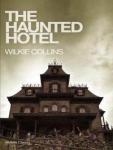
The Haunted Hotel
Wilkie Collins
'Have you ever heard of the fascination of terror?' This is a unique collection of strange stories from the cunning pen of Wilkie Collins, author of The Woman in White and The Moonstone. The Star attraction is the novella The Haunted Hotel, a clever combination of detective and ghost story set in Venice, a city of grim waterways, dark shadows and death. The action takes place in an ancient palazzo coverted into a modern hotel that houses a grisly secret. The supernatural horror, relentless pace, tight narrative, and a doomed countess characterise and distinguish this powerful tale. The other stories present equally disturbing scenarios, which include ghosts, corpses that move, family curses and perhaps the most unusual of all, the Devil's spectacles, which bring a clarity of vision that can lead to madness.
-

I Say No
Wilkie Collins
Emily Brown is an orphan girl that almost no one can help but love when they meet her. She is pursued by two worthy men: Mr. Alban Morris, the drawing master at her school; and Rev. Miles Mirabel, a clergyman. However, one of them is lying to her after she discovers that her father's death wasn't natural, as she was led to believe.
-
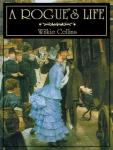
A Rogue's Life
Wilkie Collins
Frank Softly is a poor young gentleman whose snobbish father sends him to boarding school to make useful connections, but without success. He tries a variety of professions to earn his living but by the time he is twenty-five has failed at medicine, caricaturing, portrait painting, forging Old Masters and administering a scientific institution. Frank then falls in love with Dr Dulcifer's daughter, Alicia, but discovers that her father is a counterfeit coin maker. Our likeable hero is unwillingly recruited into forging to compromise him as a felon. At this point the doctor considers him unsuitable as a son-in-law and sends Alicia away to Wales. The counterfeiters are betrayed to the Bow Street Runners but Frank escapes, finds Alicia and elopes with her to Scotland. Immediately after their wedding, Frank is arrested, tried and transported to Australia. As a model prisoner he becomes servant to his own wife who has travelled to the New World in the person of a widow. By the time Frank is officially released, their speculations have proved so successful that he is a rich man and a rogue no longer.
-
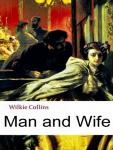
Man and Wife
Wilkie Collins
In 1855, a clever young lawyer called Delamayn finds a loophole in the Irish marriage laws which enables John Vanborough to annul the marriage that stands in the way of his parliamentary ambitions. The abandoned wife, Anne Silvester, lives with her old friend, Blanche, married to Sir Thomas Lundie, together with their respective daughters, also called Anne and Blanche.Twelve years later Vanborough, and Anne and Blanche senior are all dead. Sir Thomas has remarried but dies shortly after, when the title and estate pass to his likeable brother, Sir Patrick Lundie, a retired lawyer in his seventies. Sir Thomas is survived by his second wife, the overbearing Lady Lundie, now responsible for the two daughters. The lawyer, Delamayn, has succeeded in life and become Lord Holchester with two sons, Geoffrey and Julius.The main action of the story begins in 1868 at Windygates, the Perthshire home of Lady Lundie. Blanche is now 18 and Anne, acting as her governess, 25. Visiting them are Sir Patrick; Arnold Brinkworth, engaged to Blanche; and Geoffrey Delamayn, the school friend who once saved Arnold's life. Geoffrey has promised to marry Anne but is now trying to break the secret engagement because he will be cut out of his father's will. Anne persuades him to accept a secret marriage and knowing a little of the Scottish law arranges to go to a lonely inn at Craig Fernie where she will announce that she is waiting for her husband. If Geoffrey arrives and openly asks for his wife, the presence of witnesses will validate the marriage according to Scottish law.Geoffrey receives a telegram that his father is dangerously ill and must go to London with his brother. He therefore asks Arnold to deliver a message to Anne at the inn, carefully telling him not to use his own name but merely to ask for his 'wife'. Arnold reluctantly agrees but makes Geoffrey put the message in writing. The note, stating Geoffrey's intention to marry, is written on the back of a letter from Anne signed 'your loving wife'. Arnold arrives at Craig Fernie and to preserve Anne's reputation pretends to be her husband in front of the Landlady and the head waiter, Bishopriggs. Anne reads the letter which is subsequently stolen by Bishopsriggs while Arnold innocently continues the deception, sleeping on the sofa and leaving early the next morning.Lord Holchester recovers but on his sick-bed remembers he was responsible for the infamous treatment of Anne's mother and asks Julius to help her if she should ever need assistance. At the same time Lord Holchester will only accept Geoffrey back into the family if he makes a respectable marriage. Julius and his mother have in mind the young widow, Mrs Glenarm, whom Geoffrey will meet on his return to Scotland.Anne is worried about her marital status and without disclosing Arnold's name, has Blanche consult Sir Patrick. Geoffrey overhears the opinion that the marriage is ambiguous, but that two people are legally bound in Scotland if they pretend to be married. He therefore adopts the view that Anne is technically married to Arnold and he is free to marry Mrs Glenarm. By this time Geoffrey has agreed to represent the South in the great foot-race, a national athletic event against the North, although a medical guest in the house, Mr Speedwell, warns that the exertion would endanger his health.Anne visits Blanche at Windygates and meets Geoffrey who declares he cannot now marry her as she is already married to Arnold. In a state of shock, she deliberately leaves her friends and hides in Glasgow where she consults two different lawyers. They give conflicting opinions as to whether she is married and she collapses under the strain with a miscarriage.Ignorant of Anne and Arnold's position, Sir Patrick brings forward Blanche's wedding to Arnold. The couple are recalled from their honeymoon in Switzerland when Sir Patrick hears from Anne, who reveals Arnold's predicament and the conflicting legal opinions. Anne meanwhile recovers the stolen letter from Bishopriggs and tries to convince Mrs Glenarm of Geoffrey's prior marriage. Lady Lundie deduces that Arnold was the man at Craig Fernie and mischievously persuades Blanche to leave Arnold for her house in London where Mrs Glenarm is also staying. Sir Patrick must prove the Craig Fernie marriage is invalid to safeguard Arnold's position with Blanche, whereas Mrs Glenarm wants it confirmed so that Geoffrey is free to marry her.Geoffrey has rented a secluded house in Fulham, left to Lady Lundie's former cook Hester Dethridge, an elderly woman who is mute after a traumatic marriage to a drunken husband and communicates only in writing. Against medical advice Geoffrey completes his intensive training for the foot-race. On the last lap of the four-mile course he collapses, unable to continue. He is abandoned by his friends because they lost money on the race and is taken home by his trainer, PerryTwo days after the race, all parties attend a family conference with their lawyers. Geoffrey refuses to accept Anne as his wife and Blanche will not return to Arnold until the ambiguity of the Craig Fernie marriage is resolved. Anne, despite knowing she will have to return to Fulham, bravely produces her letter which according to the Scottish law of consent confirms her marriage to Geoffrey.Following the death of Lord Holchester, Julius has inherited the family title and visits Geoffrey to proposes a separation. In return Julius will honour an unsigned codicil to their father's will, leaving Geoffrey a secure income. Geoffrey, however, having no grounds for divorce, intends to kill his wife. Pretending he will be a good husband he refuses his brother's offer and keeps Anne prisoner in the house.Geoffrey has always been unnerved by the silent and withdrawn Hester Dethridge. The secret of her own terror of him is revealed in a written confession of murder. Years before, when she complained to the police that her husband ill-treated her and stole her money, they were unable to help because the law gave a married woman no right to her own earnings. She determined to kill him as the only way to end her misery. While her husband lay in a drunken stupor, she suffocated him through the partition wall of his locked bedroom after carefully removing and replacing the lathe and plaster. Hester was not suspected of the crime but now sees visions of a second self urging her to kill again.Geoffrey blackmails Hester into helping him murder Anne by the same means but at the last moment she sees the apparition again and attacks Geoffrey. In the same instant he suffers a fatal stroke. Hester is confined in an asylum while Anne, free of Geoffrey at last, supplants Lady Lundie by marrying Sir Patrick and becoming the new female head of the family.
